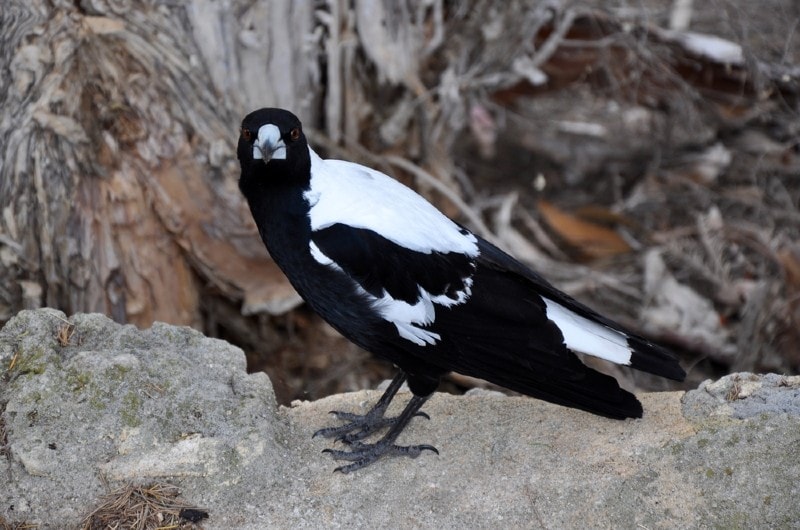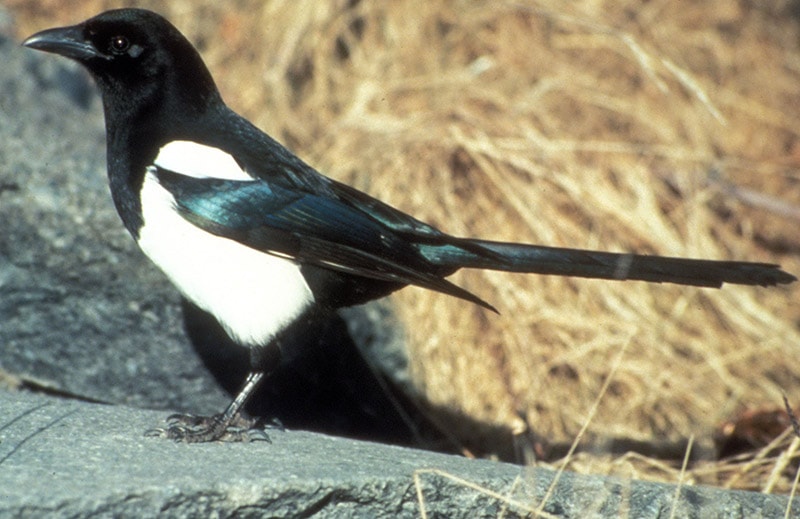Do Magpies Like Stealing Shiny Things? The Surprising Answer!
Last Updated on

Magpies are associated with bringing bad luck and being bad omen. They also have a reputation for stealing shiny objects, with tales of magpies stealing jewelry, money, and other sparkly items.
While it is true that magpies will steal items, there is nothing to actually suggest that they prefer shiny objects over dull ones or that they are more or less likely to steal shiny objects compared to their cousins, jays, and crows. In fact, some research indicates that magpies are actually scared of shiny items, and they will even sometimes ignore them.

About Magpies
Magpies are members of the corvid family, along with crows, rooks, ravens, jays, and some other species of birds. Magpies, in particular, are considered highly intelligent and are said to be one of the most intelligent species of birds in the world. They live in a variety of different habitats from fields and meadows to grasslands and forests. They eat berries and nuts as well as insects and even some small rodents and their nests can have two entrances because they are so large.

Do Magpies Steal Shiny Objects?
It is a commonly held belief that magpies steal shiny objects, with most people believing that they do it to place the trinkets in their nests and scare away potential predators. However, research indicates that this is a myth and that magpies are no more attracted to shiny objects than dull objects, and, further, that they are nervous around any new objects.

The 4 Facts About Magpies
Although magpies are not inclined to steal shiny objects, they are considered incredible birds.
1. They Are Omnivores
An omnivore is an animal that eats plant-based foods and animal-based foods, usually according to what is available, their surroundings, and even the time of year. Magpies will eat just about anything, including nuts and berries as well as insects and small mammals. They will even eat the eggs and chicks of other birds.
2. They Can Recognize Themselves
While magpies do not like shiny objects, they apparently do like mirrors. Or, at least, they can recognize their own reflection in a mirror and are one of the very few species with this ability. Some apes, dolphins, and elephants are the other species that can recognize their own reflection.
This was tested by placing a harmless mark on magpies’ necks and then showing them a reflection of themselves in a mirror. The magpies would then scratch the area on their neck where the mark was.

3. A Group of Magpies Is Called a Parliament
As with a lot of animals, there are different collective nouns given to a large group of magpies. Examples include a gulp and a mischief of magpies, but they also have the collective noun of a parliament and have been given this name because they gather in spring and have a courtly appearance.
4. They Have Very Long Tails
Birds in the corvid family tend to have long tails, but none are as long as the magpie’s. Typically, a magpie tail is equally as long as its body, and it is believed that they have such a long tail in order to be able to make swift and deliberate turns while in the air.

Are Magpies Friendly?
Magpies are considered friendly and sociable, although that doesn’t mean that they will instantly hop on your hand to take food. There are numerous instances of people befriending wild magpies, however, and they will often wait around for food.
There are some instances when magpies have entered people’s homes in order to try and beg or steal food. When their young are nesting, male magpies may defend their nests, and they may even swoop in a bid to deter people from getting too close.

Conclusion
Magpies are considered very intelligent animals and are one of a small number of species that can recognize themselves in mirrors. They are also considered friendly animals, except when the males are defending their nests, and there are reports of people befriending wild magpies using food as a taming aid.
However, magpies stealing shiny objects is a myth and there is no evidence to suggest that this is true. On the contrary, studies suggest that the opposite is actually true and that magpies are wary of any new or alien objects, including those that are shiny.
Featured Image Credit: EA Given, Shutterstock
About the Author Robert Sparks
Robert’s obsession with all things optical started early in life, when his optician father would bring home prototypes for Robert to play with. Nowadays, Robert is dedicated to helping others find the right optics for their needs. His hobbies include astronomy, astrophysics, and model building. Originally from Newark, NJ, he resides in Santa Fe, New Mexico, where the nighttime skies are filled with glittering stars.
Related Articles:
How to Clean a Refractor Telescope: Step-by-Step Guide
How to Clean a Telescope Eyepiece: Step-by-Step Guide
How to Clean a Rifle Scope: 8 Expert Tips
Monocular vs Telescope: Differences Explained (With Pictures)
What Is a Monocular Used For? 8 Common Functions
How to Clean a Telescope Mirror: 8 Expert Tips
Brightfield vs Phase Contrast Microscopy: The Differences Explained
SkyCamHD Drone Review: Pros, Cons, FAQ, & Verdict
